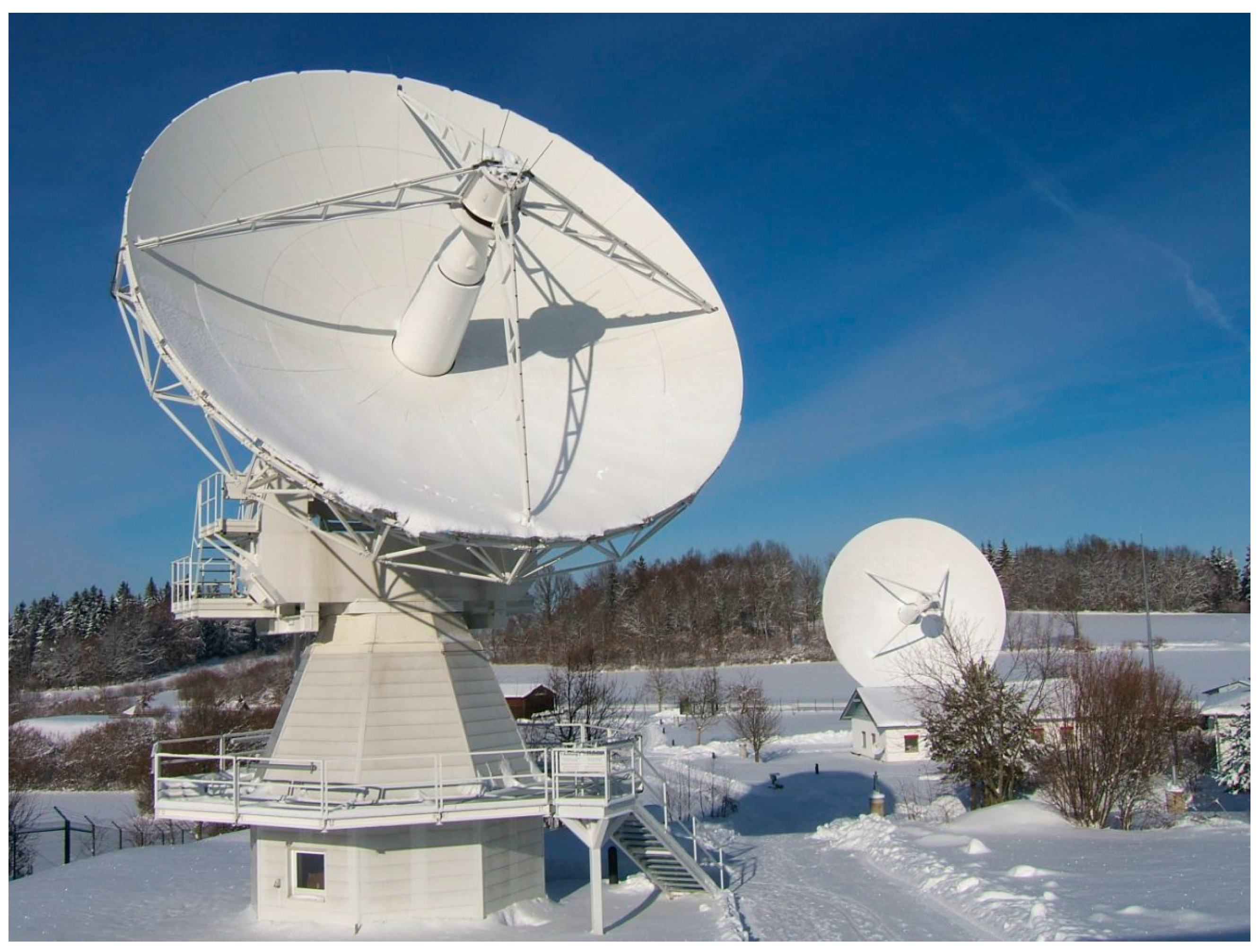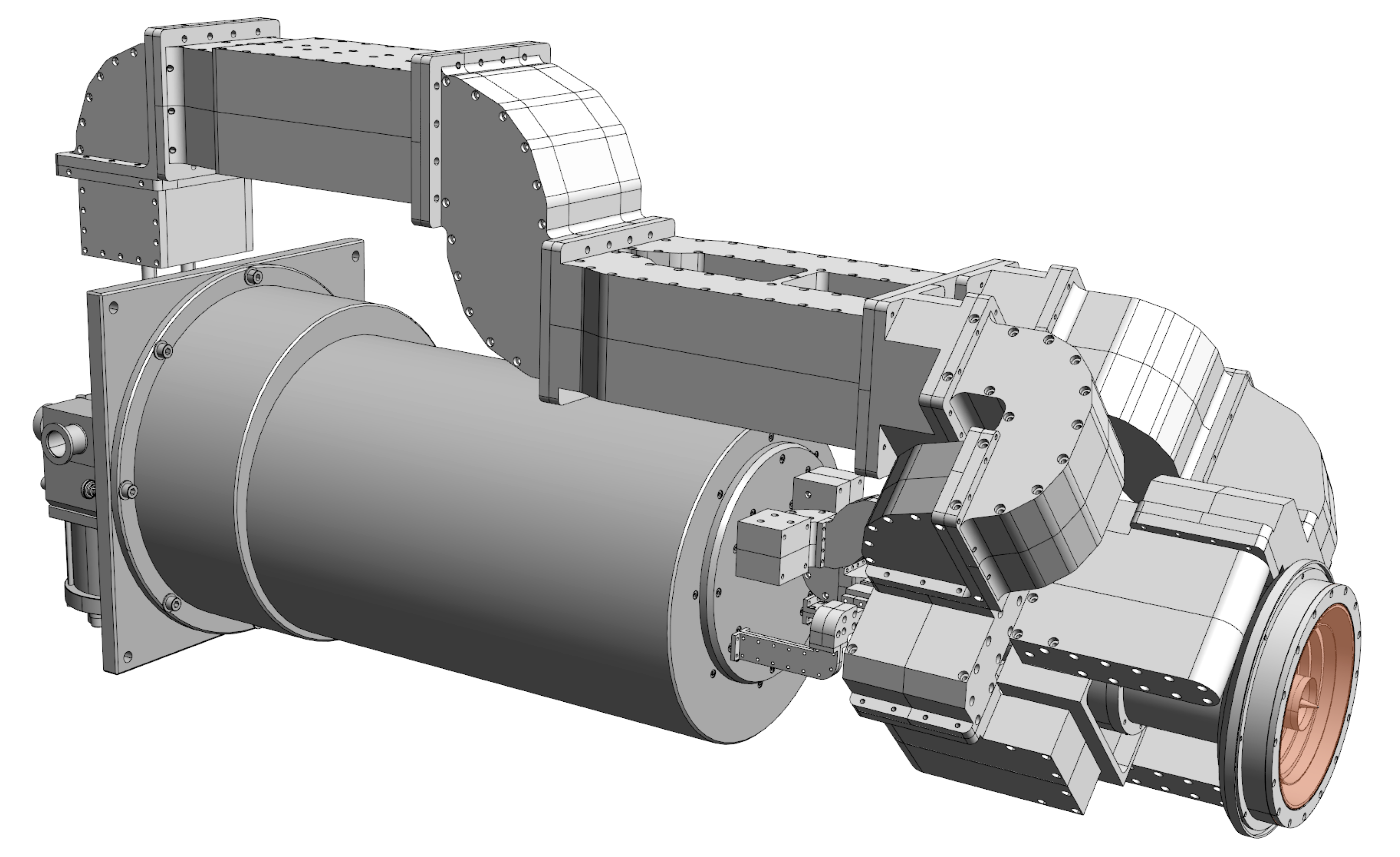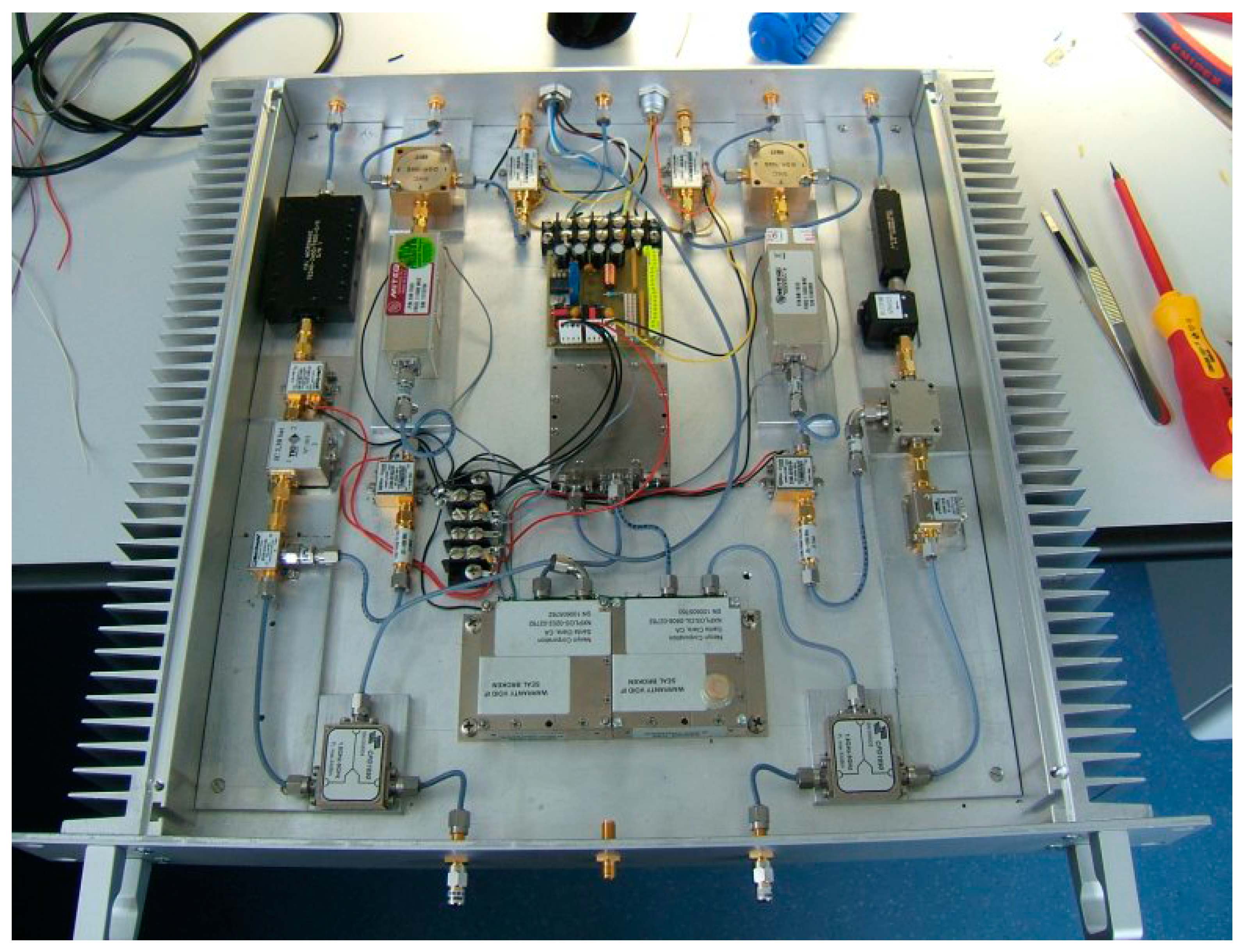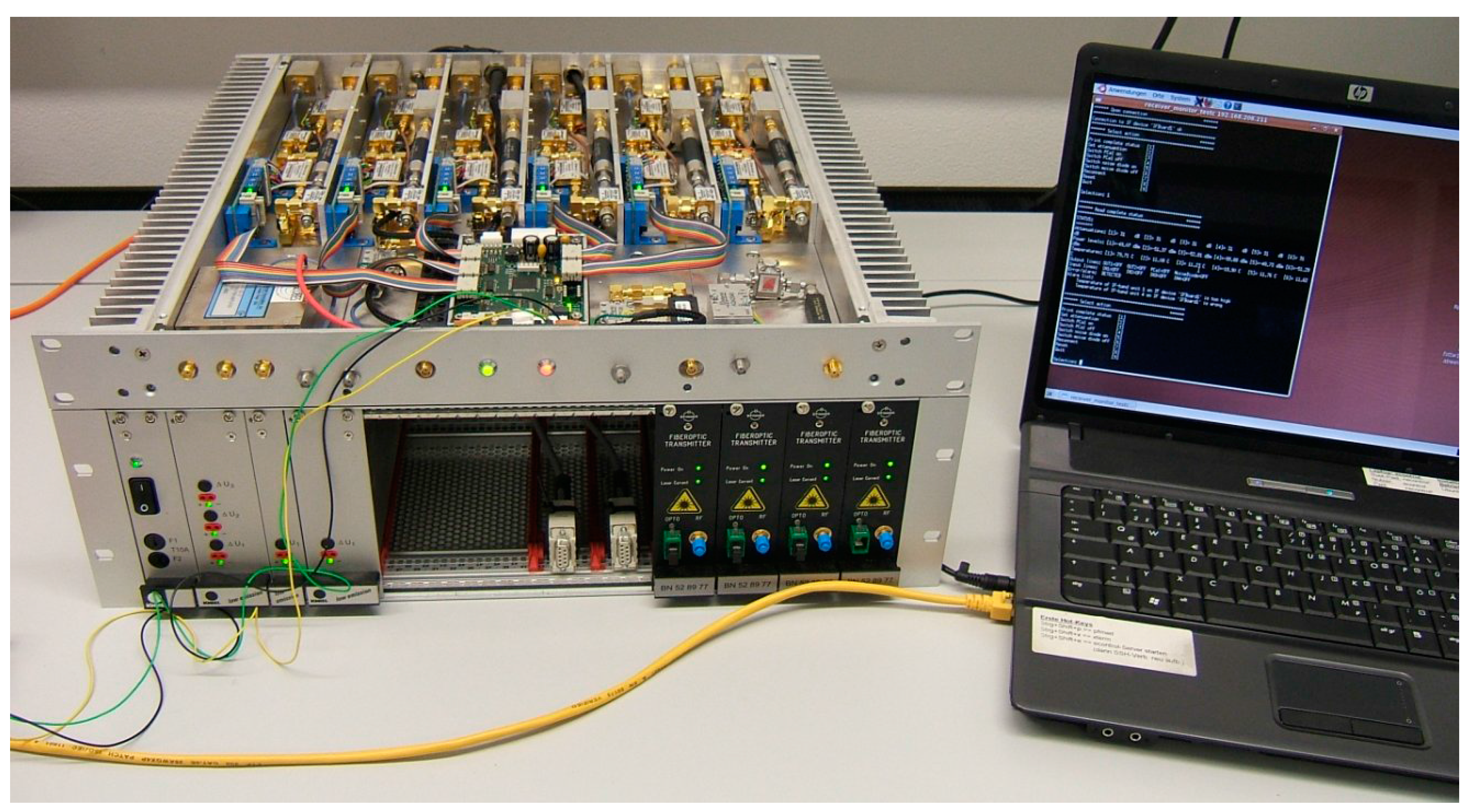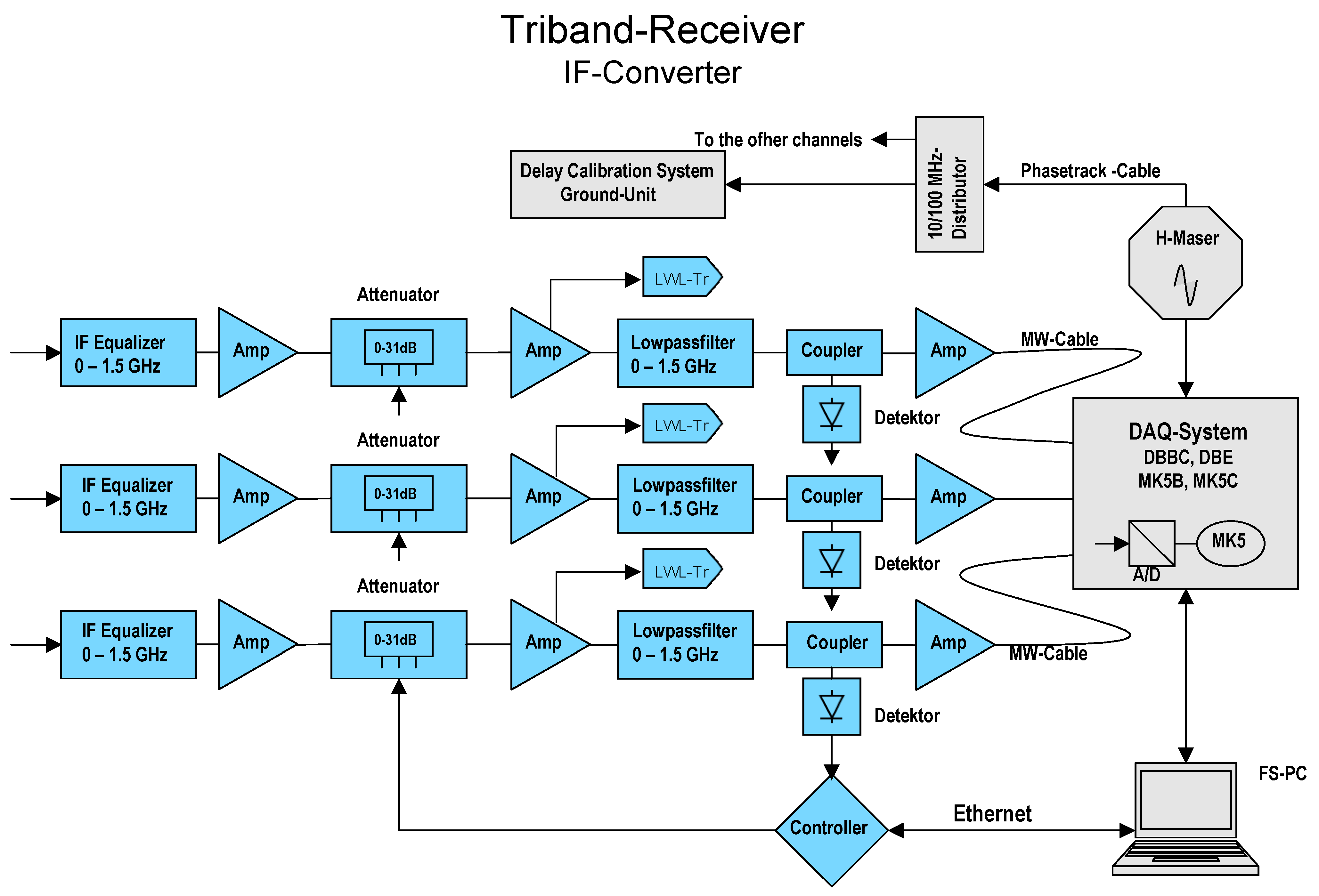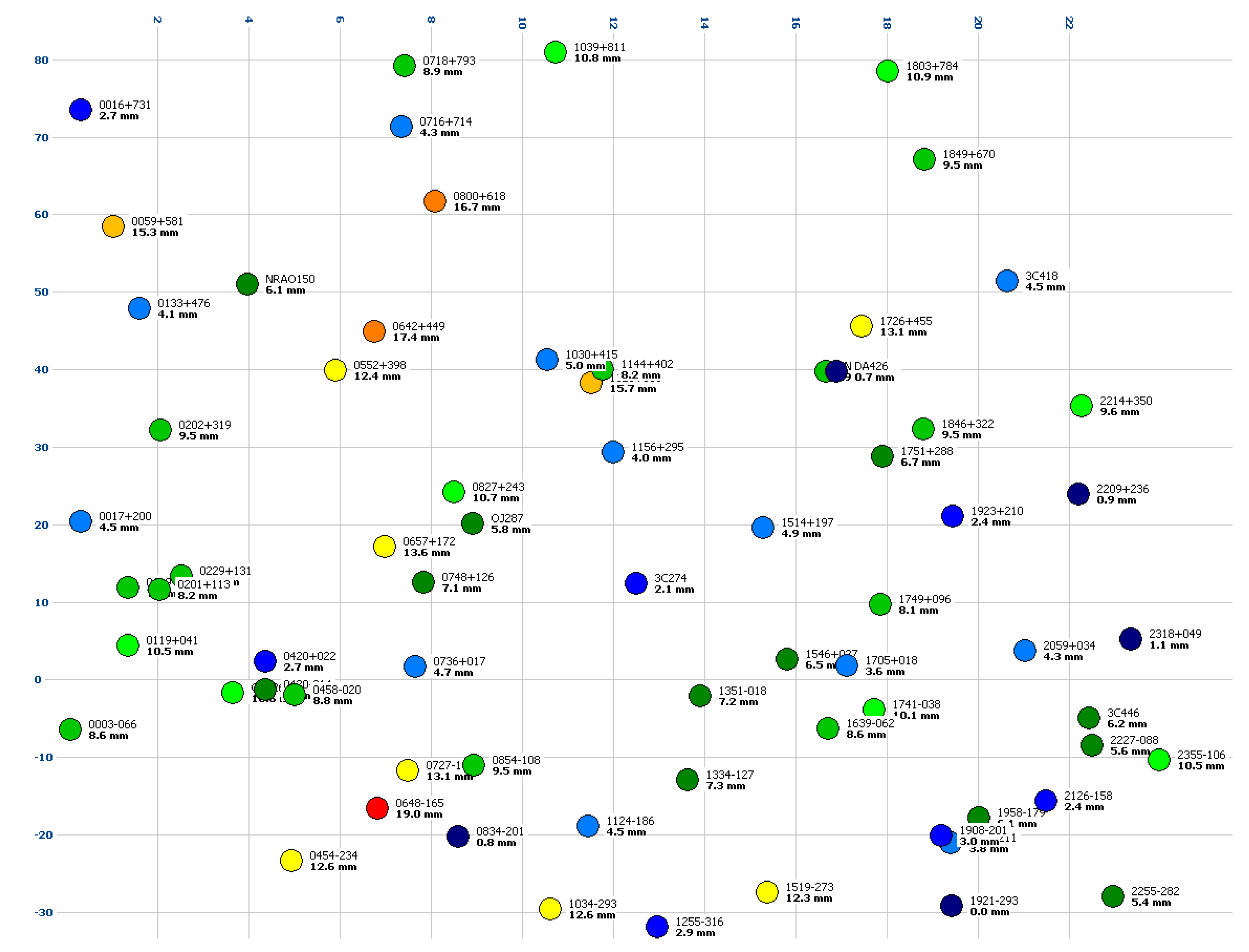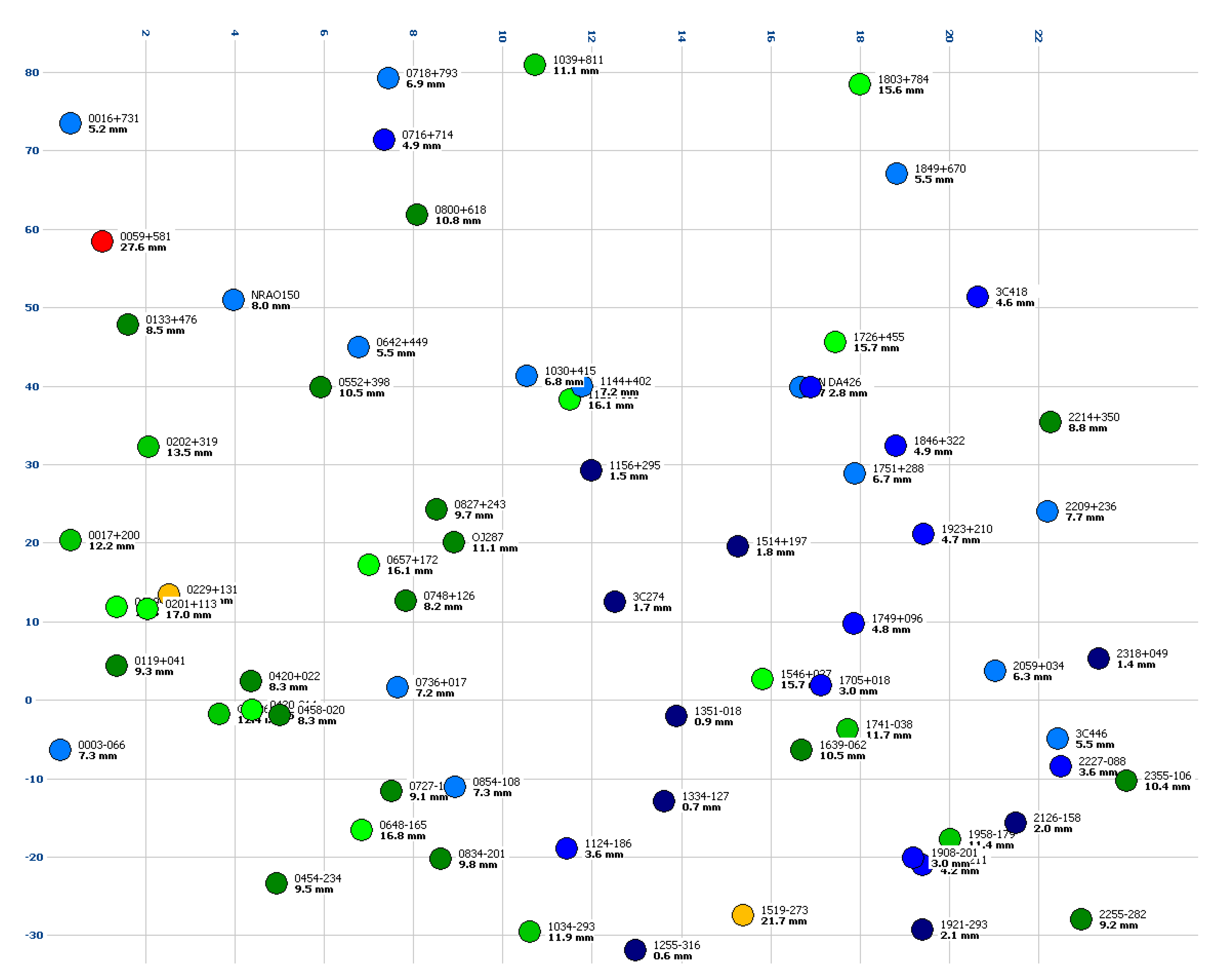Table 4 and
Table 5 show the S-band results of the VLBI group delay analysis, and
Table 6 and
Table 7 show the X-band results. The type of experiment is explained in
Section 4.2 (I = Intensive, 1 h; E = Europe, 24 h; W = Whisp, 24 h). The number of scans in the result tables is identical to the number of group delays observed (successfully correlated) over the corresponding baseline. The actual number of delays used in the least-squares adjustment process, solving for the baseline components as well as the clock polynomial, is given in column “accepted scans”. Observations classified as corrupted or unhealthy are summarized in column “rejected scans”; these scans did not become part of the adjustment procedure. A conventional outlier detector based on empirical precision estimates was used here [
41].
4.3.1. S-Band Results
As already outlined in the correlation section of this paper, RFI is present in S-band and destroys the signal on short baselines. The old RTW telescope applied sharper band-pass filters and thus can mitigate the problem to a certain extent. In contrast, the ring focal design for broadband signal reception used for the TWIN telescopes is considerably more sensitive to RFI effects. S-band results are indeed expected to be less precise compared to X-band data, because group delay precision is a function of the signal bandwidth which is only approximately 200 MHz in S-band for RTW in our legacy mode, whereas it is 720 MHz in X-band. However, the discrepancy between S- and X-band results is drastic and underlines significant RFI problems. In many cases, the outcome is simply not usable in geodetic VLBI.
In order to demonstrate the suitability of the TTW1 telescope on a long baseline for the use of both, X- and S-band data, we analyzed one 24-h session (20 August 2014) including six telescopes all over Europe. In this analysis, we investigated in particular the influence of the ionosphere correction term to the group delay observations as a simple linear combination of two group delay observables (X- and S-band). In this context, we generated a solution excluding the observations of the RTW-TTW1 baseline in Wettzell to determine its baseline length only with observations from long baselines throughout Europe. Comparing this solution (including X- and S-band data) to the results obtained by the Whisp sessions using the short RTW-TTW1 baseline (using X-band data only) leads to an evidence of the suitability of the S-band data. The results of this study are shown in
Section 4.3.3.
4.3.2. X-Band Results
In contrast to the results retrieved from S-band group delays, the results derived from X-band group delays are very encouraging and satisfactory, regarding the use of both the DBBC (
Table 6) as well as the ADS3000+ backend (
Table 7).
Figure 15 shows a histogram of the 3D differences (reference distance from local survey) and is related to the 24 experiments listed in
Table 4. The deviation is less than or equal to 2 mm in 16 experiments. The three experiments covering 24 h each, Europe (20 August 2014), Whisp1 (27 August 2014) and Whisp2 (23 October 2014) are off by +1.1, −1.8 and −0.8 mm respectively.
Regarding the data sampled with the ADS3000+ (
Table 7), we can see that one Intensive experiment (22 September 2014) with 20 observations (19 in use, one was rejected) shows a difference of around −9.1 mm, whereas the corresponding experiment sampled with the DBBC deviates by 4.4 mm which is also higher than the majority, but only half of the deviation of the ADS3000+.
The number of rejected scans is moderate in most cases. Only eight scans out of 661 group delays were rejected in the Whisp experiment adjustment, and only two scans in the Europe experiment. The percentage is higher, although not yet critical, in the second Whisp experiment (23 October 2014) with 52 rejections (5%). The first Intensive experiment analyzed resulted in six rejections (24%) with the first five observations clearly being gross errors (residuals between 3 and 22 ns corresponding to 0.95 to 6.8 m), probably due to a failure during VLBI correlation. The situation is different for the Intensive carried out on 6 October 2014 with four rejections (17%): In this case, the observations identified as outliers had residuals around 27 to 51 ps (8 to 15 mm), which is higher than for the accepted data (only up to 14 ps), but still at a level of magnitude not indicating gross failures in the correlation or sampling process.
Figure 15.
Histogram of the 3D distance discrepancies as found from X-band results in
Table 6. The number of occurrences (24 experiments with the initial S/X-band receiver) is given in y-direction, the histogram bin in x-direction.
Figure 15.
Histogram of the 3D distance discrepancies as found from X-band results in
Table 6. The number of occurrences (24 experiments with the initial S/X-band receiver) is given in y-direction, the histogram bin in x-direction.
As far as the two experiments conducted using the new tri-band receiver (23 February and 2 March 2015) are concerned, we find a slightly higher deviation from the nominal 3D distance compared to the results obtained using the initial S/X-band receiver. Although these two initial results are not enough to draw clear conclusions regarding the performance of the tri-band system, separate technical investigations revealed some minor shortcomings which have to be mitigated: An apparent problem in the third Nyquist zone (1024–1536 MHz) visible as significant DC-level in the cross-power spectrum of the correlator report could be identified as a inappropriately adjusted power level at the input of the digital down-converter (DBBC-2).
The standard deviation of unit weight
a posteriori agrees reasonably well with that
a priori. Looking at
Table 6 (DBBC backend), all standard deviations
a posteriori are slightly higher (10 to 35 ps) than
a priori (7 to 30 ps), but at a similar level. Regarding the ADS3000+ backend (
Table 7), we can see even slightly smaller or equal standard deviations
a posteriori in three cases out of the six experiments performed.
Quick Glance at the Whisp1 Experiment (27 August 2014)
Both the DBBC and the ADS3000+ were integrated for the first Whisp experiment observed by the TTW1 telescope. The receiving system is, of course, identical, but the backend and recording was implemented independently.
Figure 16 (DBBC) and
Figure 17 (ADS3000+) show a plot of the maximum residuals in a coordinate system featuring right ascension α (x-direction) and declination δ (y-direction). Note that one and the same radio source was observed multiple times. In this diagram, however, the source can only be plotted at its unique α,δ-coordinates which do not change in time. As a consequence, only the maximum (unsigned) residual is plotted.
Figure 16.
Color-coded maximum residual per radio source for the “Whisp1” experiment (27 August 2014) in X-band using the DBBC backend. The coordinate system is right ascension α (x-direction, in hours) versus declination δ (y-direction, in degrees). The radio source name is printed with the max. residual in units of millimeters below. Minimum and small residuals in blue and green, large and maximum residuals in orange and red.
Figure 16.
Color-coded maximum residual per radio source for the “Whisp1” experiment (27 August 2014) in X-band using the DBBC backend. The coordinate system is right ascension α (x-direction, in hours) versus declination δ (y-direction, in degrees). The radio source name is printed with the max. residual in units of millimeters below. Minimum and small residuals in blue and green, large and maximum residuals in orange and red.
When comparing the two diagrams we do not see any systematic patterns. The results obtained with the DBBC and the ADS3000+ backend appear to be stochastically independent. We consider this to be an indication that no dominant systematic error effects are introduced via the receiving chain, because such effects should yield similar patterns in the residual plot. In our case, the distribution appears to be random, although this topic might still require a more detailed investigation. Note that the phase calibration unit of TTW1 was disabled for the local experiments as mentioned in
Section 4.2.
4.3.3. Alternative VLBI Data Analysis Using Calc/Solve
In addition to the in-house software used at the Geodetic Observatory Wettzell, the VLBI group at the Institute of Geodesy and Geoinformation of the University of Bonn performed a comparative data analysis using the Calc/Solve software package and the corresponding solution setup described in
Section 4.1.2.
Figure 17.
Color-coded maximum residual per radio source for the “Whisp1” experiment (27 August 2014) in X-band using the ADS3000+ baseband converter. The coordinate system is right ascension α (x-direction, in hours) versus declination δ (y-direction, in degrees). The radio source name is printed with the max. residual in units of millimeters below. Minimum and small residuals in blue and green, large and maximum residuals in orange and red.
Figure 17.
Color-coded maximum residual per radio source for the “Whisp1” experiment (27 August 2014) in X-band using the ADS3000+ baseband converter. The coordinate system is right ascension α (x-direction, in hours) versus declination δ (y-direction, in degrees). The radio source name is printed with the max. residual in units of millimeters below. Minimum and small residuals in blue and green, large and maximum residuals in orange and red.
We selected experiments with 24-h observation periods for our comparisons. Up to now, only three experiments have been observed which cover the full 24-h period (Europe-130 on 20 August 2014, Whisp1 on 27 August 2014 and Whisp2 on 23 October 2014). These data are processed for the estimation of station coordinates on a session-by-session basis:
Short baseline analysis: Only X-band observations on the short 123 m baseline between RTW and TTW1 are included in the first solution setup, from which the relative telescope coordinates are estimated. The baseline lengths are deduced from the coordinate results and listed in
Table 8. The resulting baseline lengths RTW-TTW1 differ only in the range of a few millimeters for the three experiments. We compare the individual results to the mean of the two Whisp sessions here. One reason to exclude the Europe session from this mean is that the number of observations is significantly smaller than for the two Whisp sessions. The second reason is that we want to establish reference results which are completely independent of the Europe session because we use these session’s data in
Section 4.3.1 for validating the S-band data.
Table 8.
Results obtained from X-band group delays using the DBBC backend and the VLBI analysis software package Calc/Solve.
Table 8.
Results obtained from X-band group delays using the DBBC backend and the VLBI analysis software package Calc/Solve.
| Date | Type | No. Obs. | 3D Distance and Std. Deviation | Mean Length and Std. Deviation | Residuals |
|---|
| (mm) | (mm) | (mm) | (mm) | (mm) |
|---|
| 20 August 2014 | E | 219 | 123,307.4 | 15.1 | 123,307.5 | 12.0 | −0.16 |
| 27 August 2014 | W | 652 | 123,307.1 | 14.8 | −0.39 |
| 23 October 2014 | W | 1000 | 123,307.9 | 15.8 | 0.39 |
The resulting reference baseline length from VLBI data analysis differs only 0.5 mm from the value obtained by terrestrial measurements. Thus, the determination of the small baseline length RTW-TTW1 was accomplished rather successfully.
Long baseline analysis: In addition to the baseline vector determination, the quality of the S-band data is further investigated in the following. As outlined and discussed in
Section 3.2 as well as
Section 4.3.1, S-band data are of inferior quality due to remaining RFI problems in the single S-band data. In order to demonstrate the suitability of the S-band data, in particular for long baseline processing using either the TTW1 or the RTW telescope and a partner telescope, we focus on one 24-h session including both, small distances at Wettzell as well as long baseline lengths throughout Europe. For this purpose, the data from the Europe-130 experiment (20 August 2014), which consists of six VLBI stations (Madrid, Spain; Metsahovi, Finland; Ny Alesund, Norway; Zelenchukskaya, Russia; TTW1 and RTW in Wettzell, Germany) are used.
In this test analysis, we deliberately excluded the observations of the short 123 m baseline between RTW and TTW1 and determined the vector between these telescopes only with observations on the long trans-European baselines. Here, the X-band group delay observables are corrected for ionospheric refraction through the co-linear S-band observations.
Analysis yields a Wettzell local vector length of 123.3089 m which agrees very well with the mean of the Whisp sessions (123.3075 m) as well as the reference distance from local surveying (123.3070 m) considering the fact that the results were deduced from completely independent session types. It should be mentioned that the shortest baseline is the one to Madrid with a length of about 1650 km.
In conclusion, regarding the short TTW1-RTW baseline, the S-band data are indeed affected by RFI problems as mentioned in
Section 4.3.1. However, as indicated in
Section 3.2, the S-band can be successfully used for ionosphere calibration on the long trans-European baselines leading to satisfactory results.
